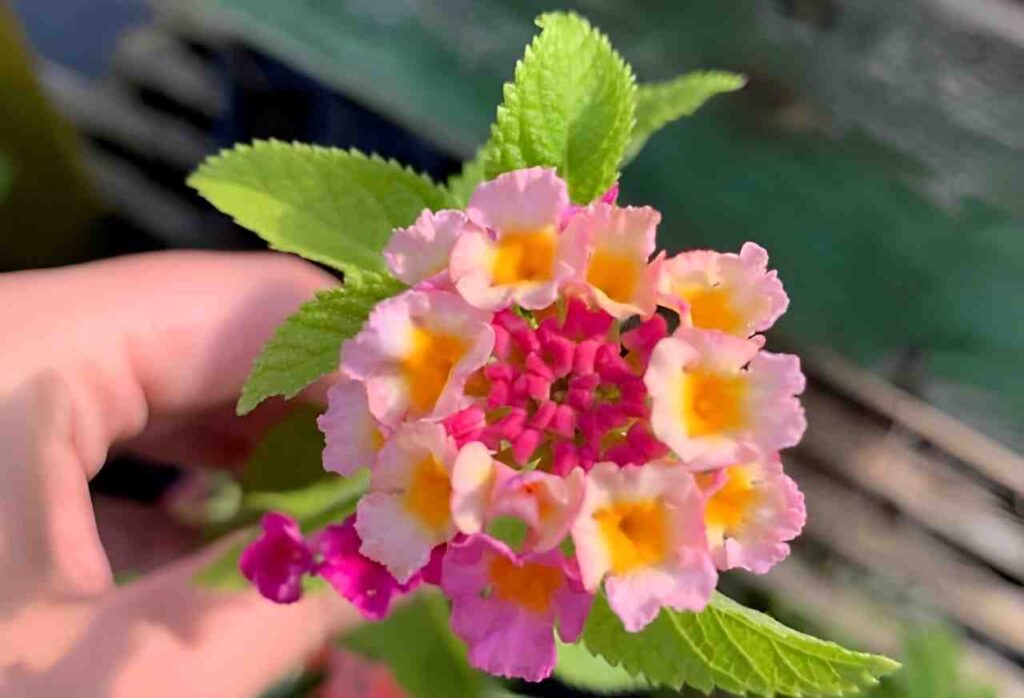Lantana Flower is a popular flowering plant known for its bright colors, resilience, and ease of care. This versatile plant is often grown in gardens, landscapes, and containers, adding a splash of color wherever it blooms. With its clusters of small, vividly colored flowers and a strong ability to thrive in different climates, lantana is beloved by gardeners worldwide.
Characteristics  of Lantana
of Lantana
Lantana flowers grow in tight, ball-shaped clusters. Each cluster consists of numerous tiny blooms, which can be red, orange, yellow, pink, white, purple, or a mix of these colors. One of the most unique features of lantana is that the flowers often change color as they mature, making the plant even more visually interesting.
The leaves of lantana are dark green, rough-textured, and emit a distinct aroma when crushed. Though the scent might not appeal to everyone, it’s a notable characteristic of the plant. Lantana is often used in gardens to attract butterflies, bees, and hummingbirds due to its sweet nectar.
Varieties of Lantana
Lantana comes in several species, with the most common being Lantana camara. This variety is well-known for its multicolored blooms and ability to adapt to various growing conditions. Other popular types include:
- Lantana montevidensis: A trailing lantana variety often used in hanging baskets or as ground cover.
- Lantana trifolia: Known as popcorn lantana, this species produces clusters that resemble small berries.
- Hybrid lantanas: These are developed to feature different colors, forms, or growth habits, offering more options for garden design.
Growing and Caring for Lantana
Lantana is a low-maintenance plant, making it a favorite among beginner and experienced gardeners alike. It thrives in warm, sunny environments and tolerates drought conditions once established. Here are some essential tips for growing lantana:
- Sunlight: Lantana loves full sun, requiring at least 6 hours of direct sunlight each day. This helps ensure abundant blooming throughout the season.
- Soil: It grows well in well-drained soil and can tolerate poor soil conditions, making it suitable for areas with less-than-ideal ground quality.
- Watering: Lantana is drought-tolerant, but it will need regular watering while it establishes itself. Once mature, it can go longer between watering.
- Pruning: Pruning is essential to keep lantana in shape, especially since it can become unruly. Trim it regularly to encourage new blooms and maintain a compact form.
- Pests and Diseases: Lantana is generally resistant to pests and diseases, but it may occasionally face issues like powdery mildew, whiteflies, or spider mites.
Uses and Benefits of Lantana
Lantana is prized not only for its ornamental value but also for its ecological benefits. Its flowers attract pollinators, such as butterflies and bees, making it a useful addition to pollinator-friendly gardens. The plant’s ability to grow in various conditions, from garden beds to containers, adds to its versatility.
Additionally, lantana can be used as ground cover in landscapes due to its fast-growing nature and spreading habit. In hotter climates, it is often grown as a perennial, whereas in colder areas, lantana is treated as an annual or overwintered indoors.
Caution: Toxicity
While lantana is beautiful, it’s important to note that certain species, especially Lantana camara, can be toxic to pets and humans if ingested. The berries, in particular, are considered poisonous. It’s best to plant lantana in areas where children and pets won’t be tempted to eat them.
Conclusion
The lantana flower is a colorful, hardy, and low-maintenance addition to any garden. With its easy care requirements, bright blooms, and appeal to pollinators, it’s no wonder this plant is a favorite for gardens around the world. Just keep its potential toxicity in mind, and you’ll have a stunning, resilient plant that brings joy to your landscape season after season.
for more stay tuned at Aesthetic Life


